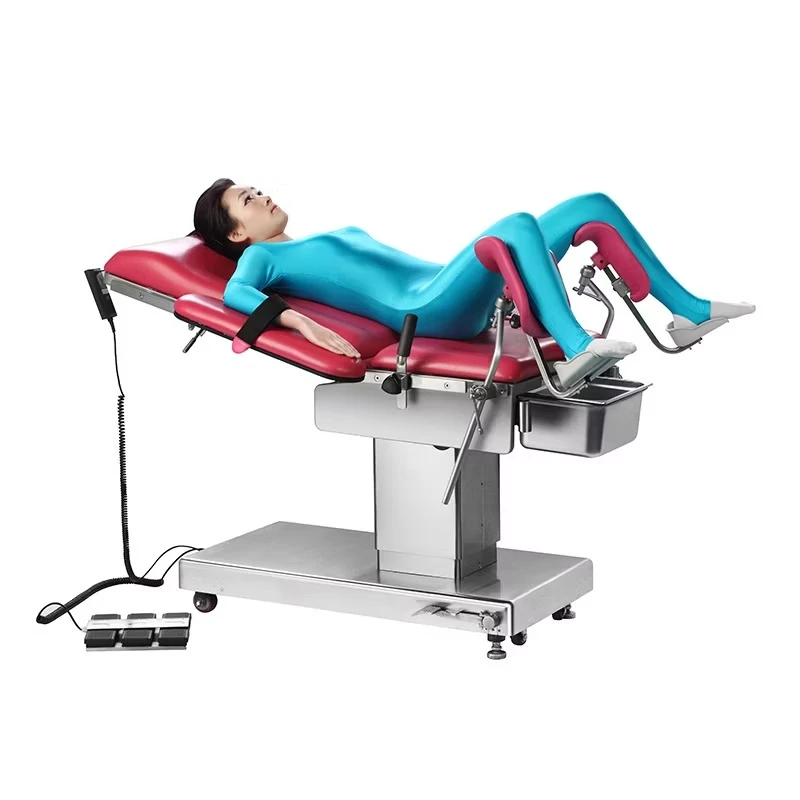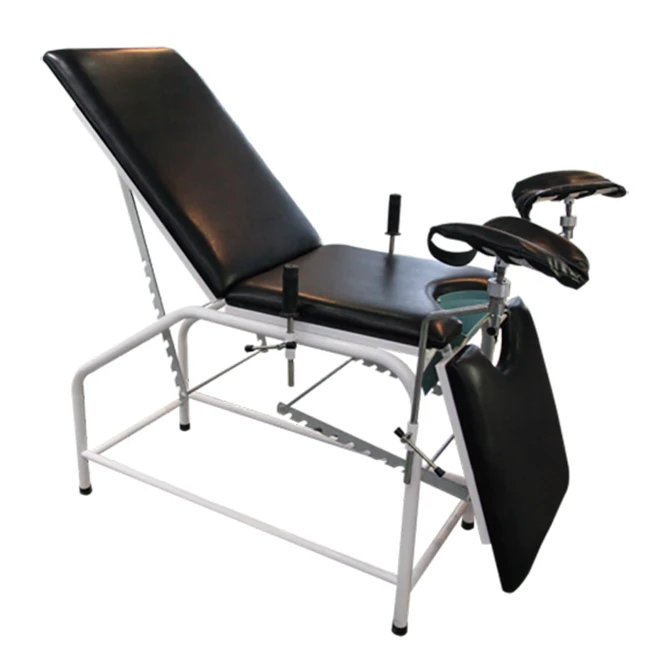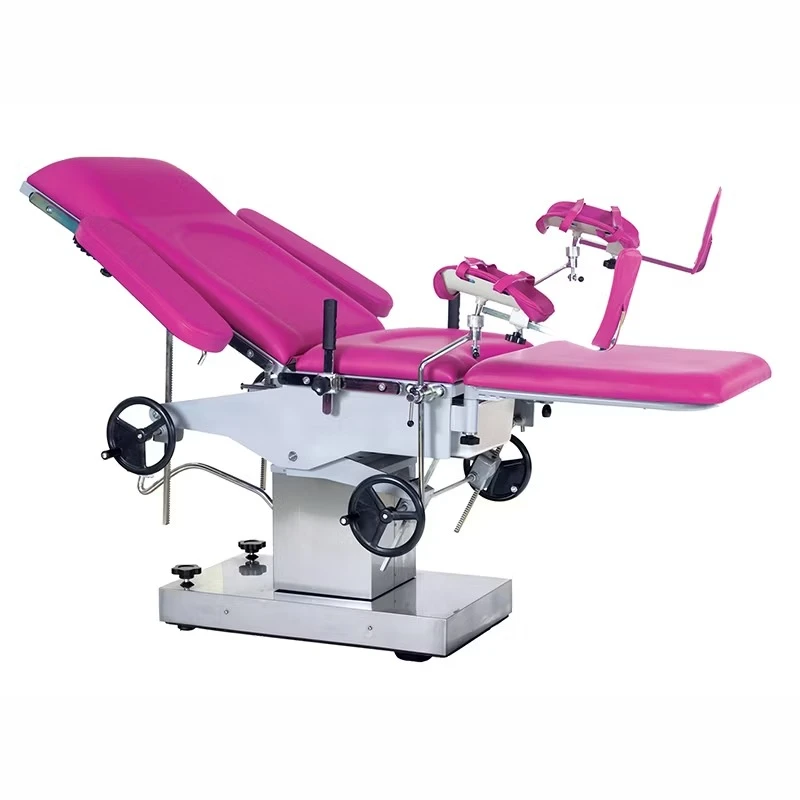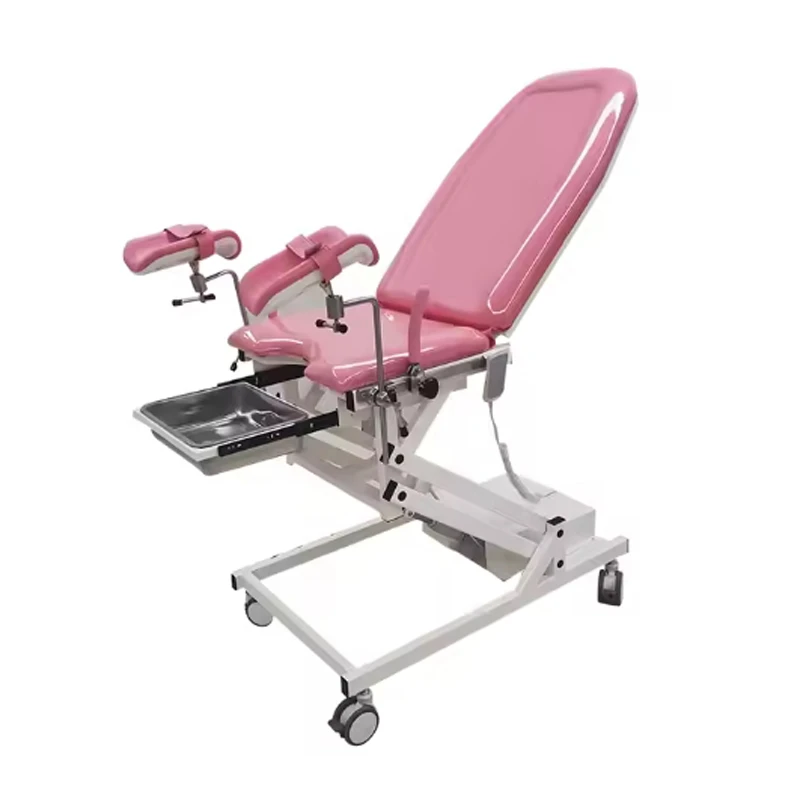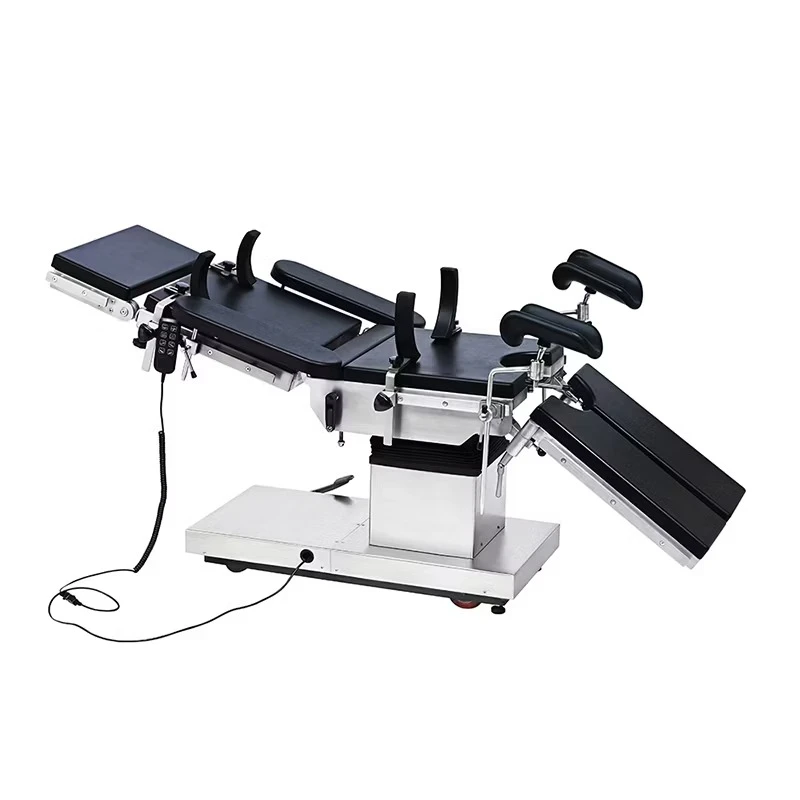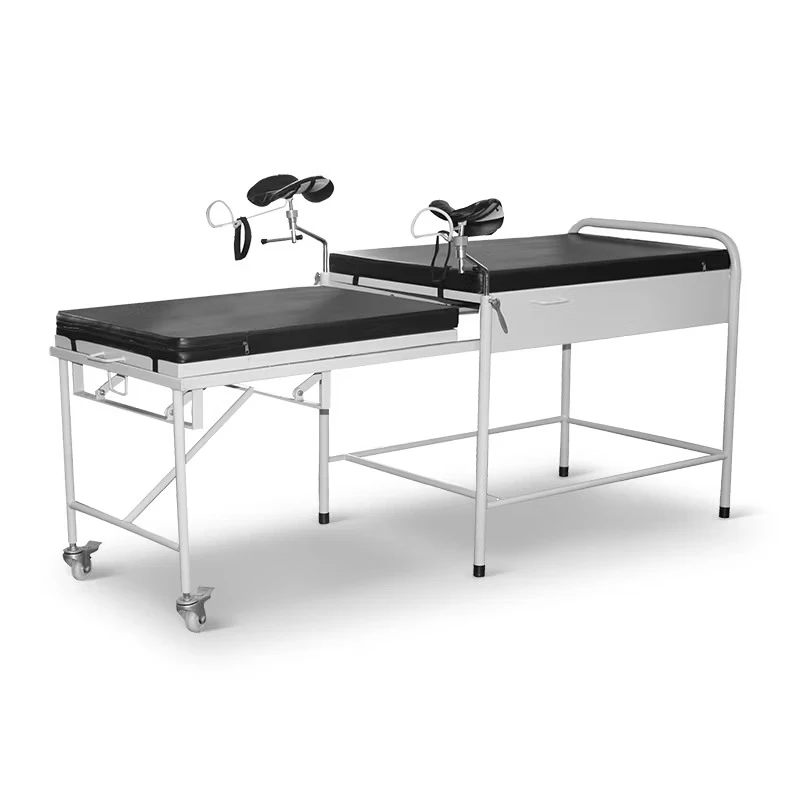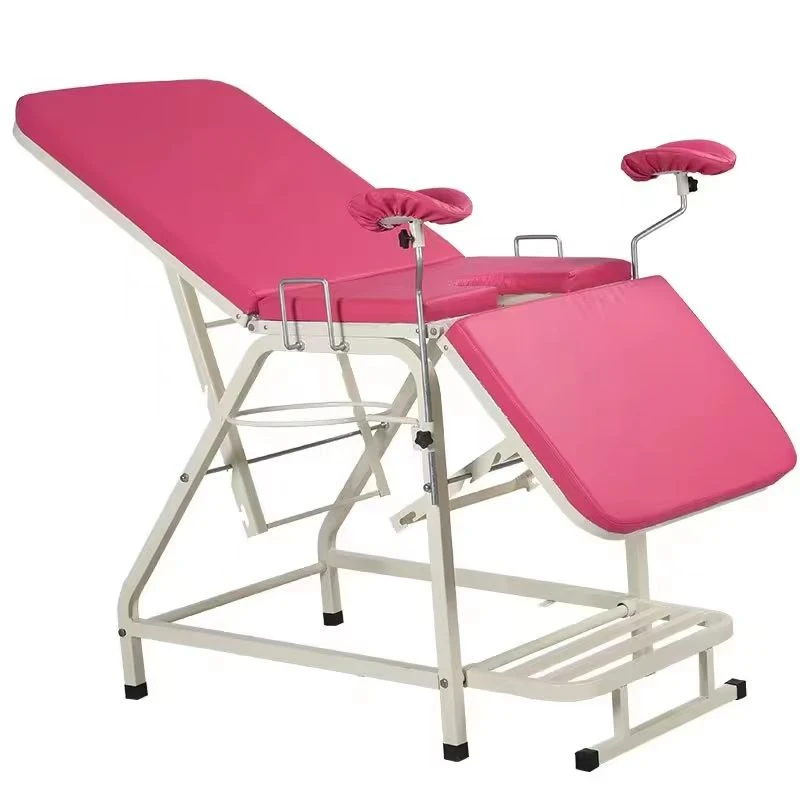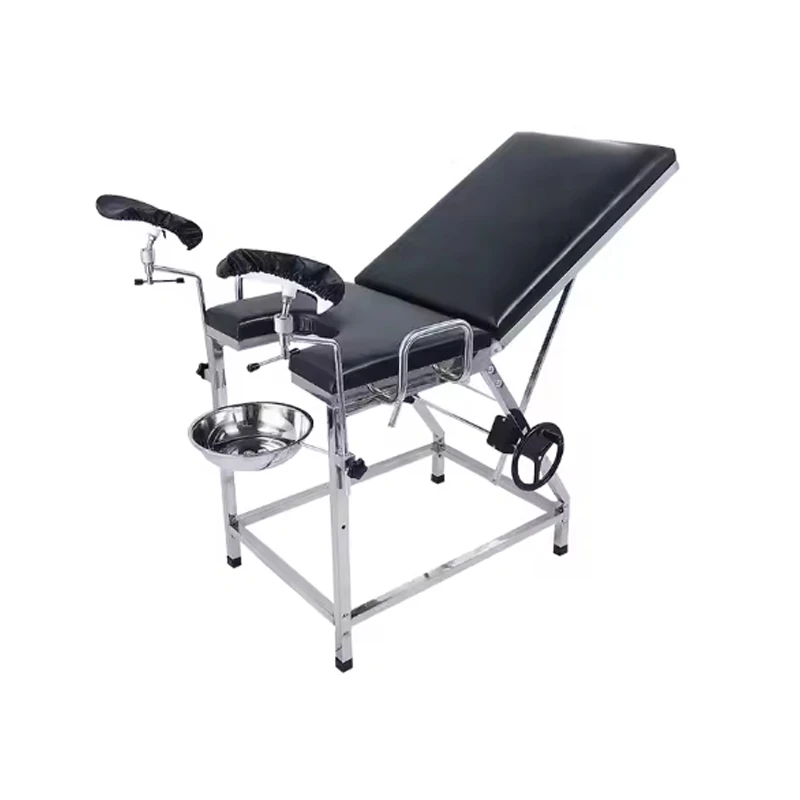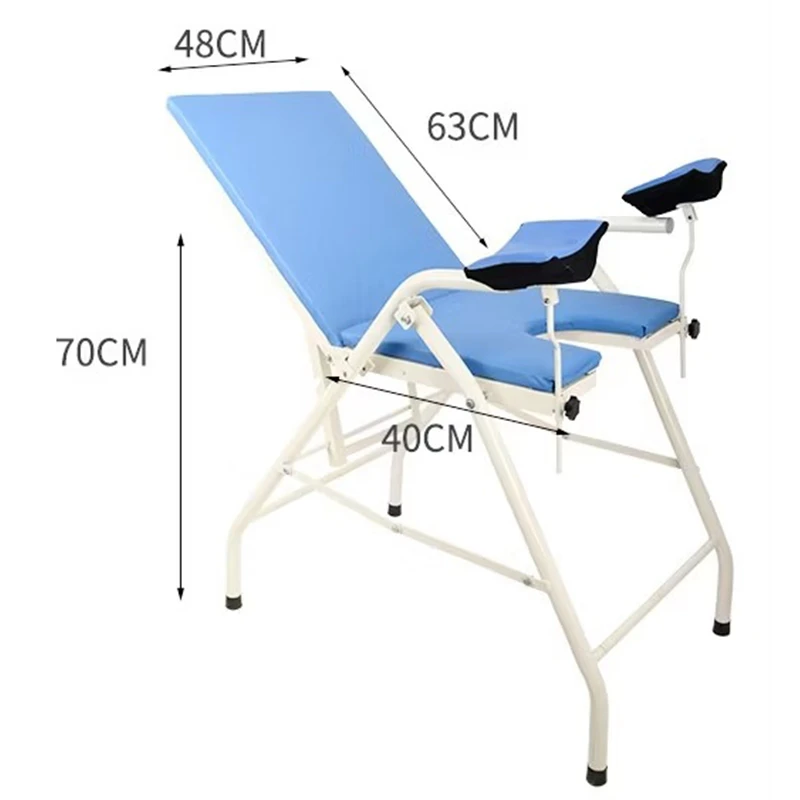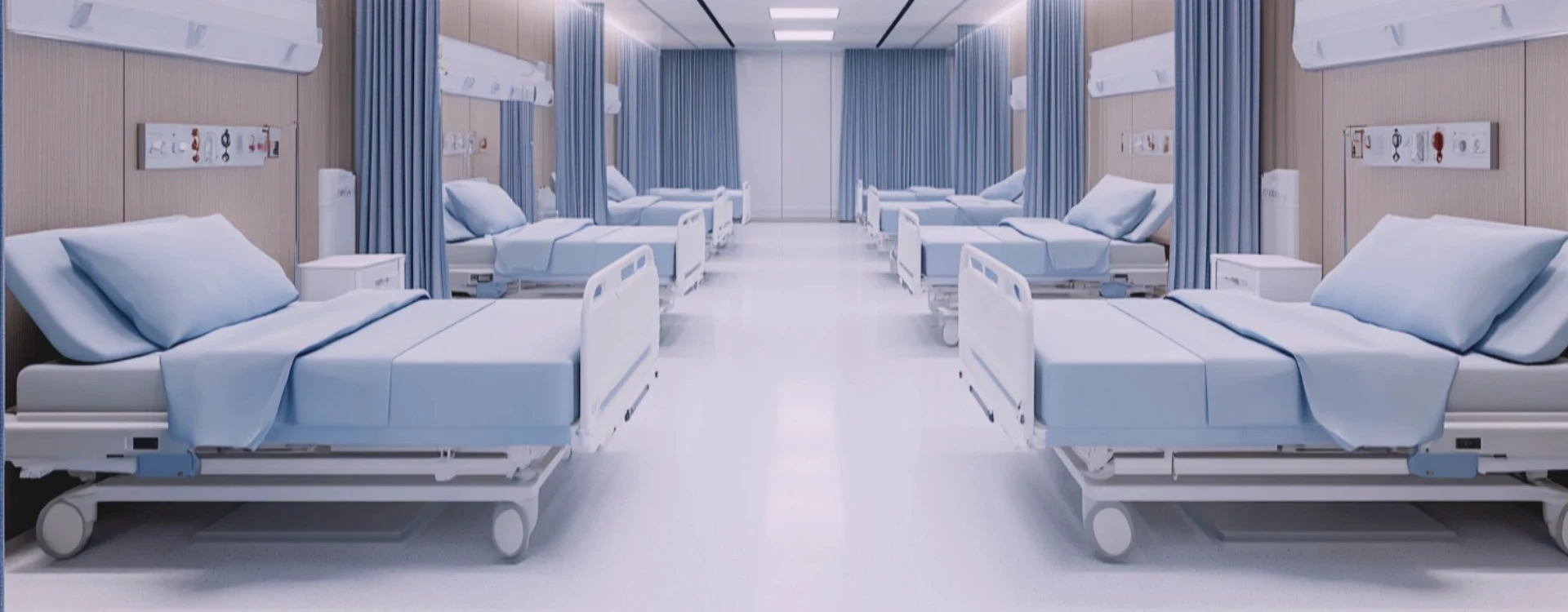
A gynecological examination table is specially designed to provide comfort and support during gynecological exams and procedures. Key features of these tables include an adjustable backrest and leg supports, allowing for proper positioning of the patient to facilitate various examinations. The backrest is usually adjustable to different angles, enabling both the patient’s comfort and optimal access for the examiner. Leg supports, which can be easily adjusted or removed, provide stability and convenience during the examination while allowing for a range of positions. These tables often have cushioned surfaces to ensure comfort during prolonged procedures. The frame is typically made from durable materials such as stainless steel or heavy-duty aluminum, ensuring long-term stability and resistance to wear and tear. Many gynecological examination tables are height-adjustable, allowing for easier patient transfer and reducing physical strain on healthcare providers. Additionally, some models come with built-in stirrups or footrests that can be easily adjusted for different patient needs. These tables are also designed for easy cleaning and maintenance, with smooth, wipeable surfaces resistant to stains and bacteria, ensuring hygienic conditions. Some tables also include integrated storage options, such as drawers or shelves, for keeping medical instruments and supplies within easy reach during exams.
How Does A Gynecological Examination Table Benefit Healthcare Providers and Patients?
A gynecological examination table offers several benefits to both healthcare providers and patients, primarily by ensuring comfort, safety, and efficiency during exams and procedures. For healthcare providers, these tables improve accessibility and ease of use, as the adjustable backrest and leg supports allow for better positioning of the patient, making examinations more efficient. The ability to adjust the height of the table reduces strain on the provider’s back, making it easier to perform procedures without bending over or stretching. The sturdy, stable frame ensures that the table remains secure during use, even when adjusting positions or supporting patients with varying weights. The included storage options provide easy access to necessary tools, ensuring that the provider can maintain a smooth workflow. For patients, comfort is a key factor, and the padded surface helps reduce discomfort during lengthy or sensitive exams. The adjustable leg supports and stirrups help provide a secure and comfortable position, reducing the likelihood of muscle strain or discomfort during procedures. The table’s ergonomic design ensures that patients feel more relaxed and less anxious during exams, which is especially important in a setting that can often be stressful. Overall, a well-designed gynecological examination table enhances the care experience by improving both provider efficiency and patient comfort.
How To Choose The Right Gynecological Examination Table For A Medical Facility?
When choosing the right gynecological examination table for a medical facility, there are several factors to consider to ensure it meets both functional and patient comfort needs. First, assess the table’s adjustability—look for a model with a flexible backrest and leg supports that can be easily repositioned to accommodate different patient needs. The ability to adjust the height of the table is also crucial, as it allows healthcare providers to work comfortably and reduces the physical strain of patient transfers. Consider the material used for the table’s surface and frame—durable, easy-to-clean materials such as stainless steel or high-quality aluminum are ideal for maintaining hygiene and ensuring long-term use. A well-padded, comfortable surface is important for patient comfort, as gynecological exams can sometimes be lengthy or uncomfortable. Ensure that the table has adjustable stirrups or leg supports that can be customized for different body types and exam requirements. Some models also come with integrated storage options, allowing for easy access to medical instruments and supplies during exams. Look for a table that is stable and provides secure positioning for the patient during procedures, as safety is a primary concern. Additionally, evaluate the overall design and functionality—consider whether features such as mobility, easy cleaning, and ergonomic design align with the needs of your practice. Finally, ensure that the table is within your budget while meeting the necessary safety and comfort standards for both providers and patients.



 PDF
PDF